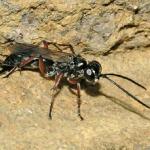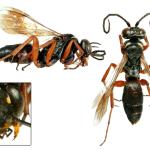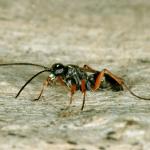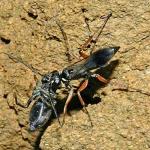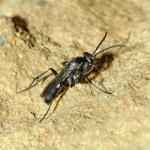Confined to southern England and Wales extending northwards to Worcestershire, Warwickshire, Northamptonshire and Suffolk. It is unknown in Ireland but is present on all the larger Channel Islands.
Abroad, the species occurs in north and central Europe (Wolf, 1972).
This species is not regarded as being scarce or threatened.
Day (1988) is the standard work for identifying British Pompilidae. Wiśniowski (2009) is also useful.
Typical of drier situations and sandy soils. Also dilapidated walls (Day, 1988). The species has been found on unstable clay undercliffs on the Dorset coast (S P M Roberts, pers. comm.).
June to August; occasionally as early as late May.
Prey consists of small jumping spiders of the family Salticidae, with the occasional collection of members of the Thomisidae (Day, 1988). The wasp also hunts spiders which live in vertical, or near vertical faces, such as cliff walls and upturned root-plates. It is normally found away from such situations (M Edwards, pers. comm.).
This wasp utilises a wide range of natural cavities, along with abandoned aculeate burrows, empty mud cells and snail shells. The nest entrance is blocked with detritus (Day, 1988).
No information available.


